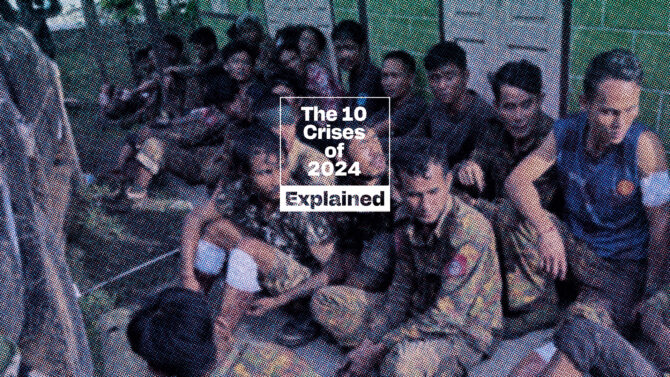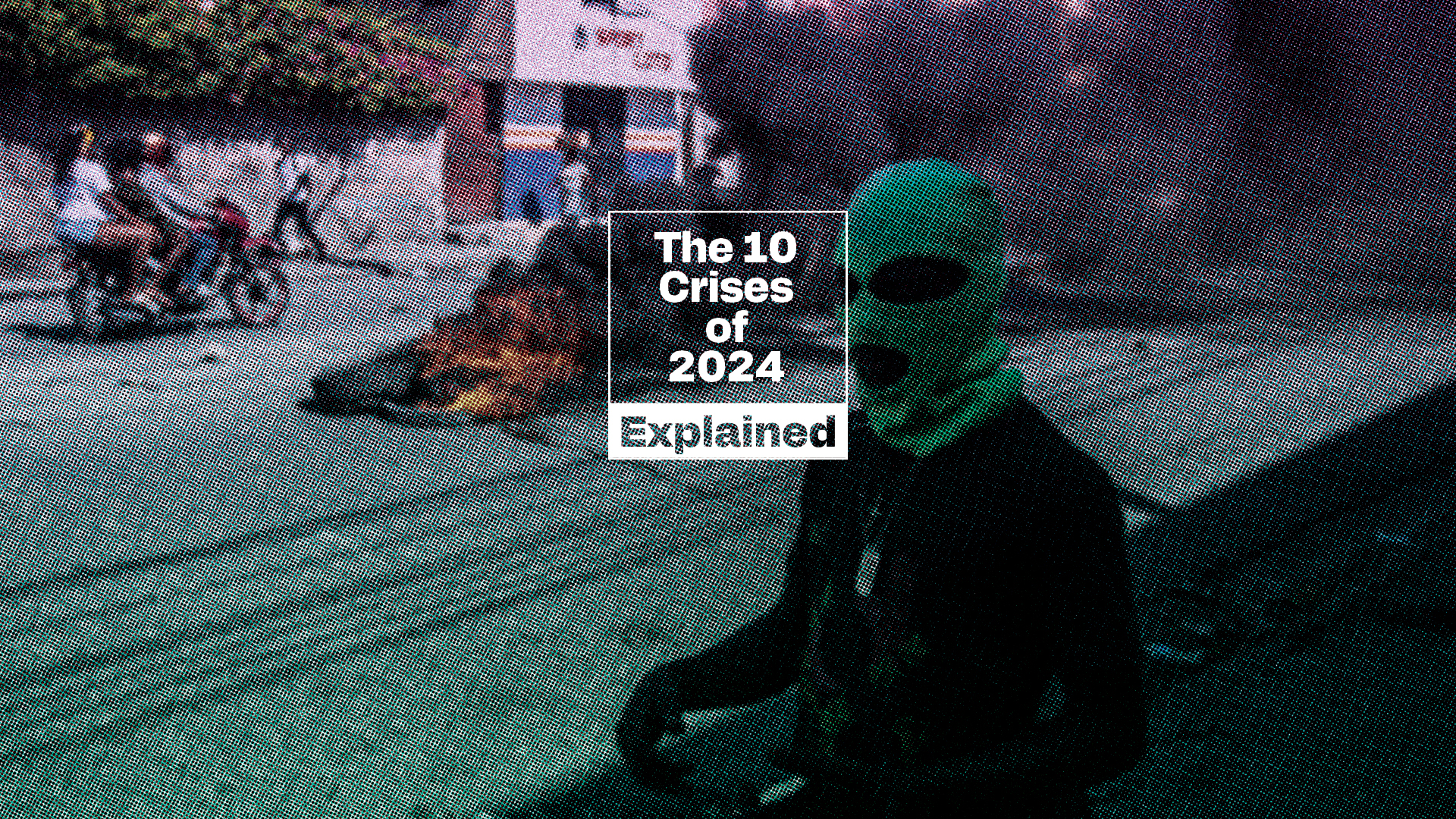In 1804, Haiti gained independence from France, becoming the first state born from a successful slave revolt. Two hundred and twenty years later, the country faces a prolonged and escalating crisis that claimed over 4,400 lives in 2023 alone and brought the state to the brink of collapse. In the fifth installment of the series “10 Crises of 2024,” iMEdD explains the crisis in Haiti and speaks with Diego Da Rin, an analyst at the International Crisis Group and an expert on Latin America and the Caribbean, about the growing violence, the role of gangs, and the future of the island country.
4. Myanmar: Civil war and Democracy in Southeast Asia

The 10 crises of 2024 – Explained: 4. Myanmar: Civil war and Democracy in Southeast Asia
How did Haiti get into crisis?
The ongoing crisis in Haiti finds its roots in July 2021, when the elected President, Jovenel Moïse, was assassinated at his residence in the capital, Port-au-Prince. Since then, the Caribbean country has been plunged into turmoil, with the economic crisis, the deadly 2021 earthquake, and the rise of armed gangs controlling large portions of the territory having pushed the situation to the breaking point.
What is the situation in the country?
The most recent wave of violence on the streets of Haiti began in the early morning hours of 29 February 2024. On that day, the country’s two largest, previously rival, gang alliances – the G9 and Gpep – joined forces and attacked Port-au-Prince, taking control of police stations, government buildings, and even the capital’s port and international airport. The choice of that particular day was not a coincidence. The country’s then Prime Minister, Ariel Henry, had just left for Kenya to negotiate a mission that, with UN backing, would deploy police forces to Haiti to battle gangs. According to Crisis Group analyst Diego Da Rin, the gang alliance and attack was due to this trip. “The main motive of this coordinated gang attack and the non-aggression pact that was forged between former rival coalitions is to counter plans to deploy a security mission in Haiti.”
On March 2nd, the gangs, known collectively as Viv Ansanm (“Live Together”), stormed the country’s two largest prisons, releasing some 4,700 prisoners. In the ensuing days, they continued their attacks on police officers across various parts of the capital. It is estimated that the gangs currently control 80% of Port-au-Prince. Meanwhile, on April 25th, Henry resigned, ceding power to a nine-member transitional council tasked with steering the country towards stability and overseeing elections no later than February 2026.
What role do gangs play?
According to data from the non-profit organisation Armed Conflict Location & Event Data Project, the number of active gangs in Haiti in 2023 has doubled compared to 2021, accompanied by a 60% increase in violence involving gangs. The same analysis indicates that the mass prison breaks on March 2, 2024 will further exacerbate the situation. In a report published in March, the UN High Commissioner for Human Rights stated that in the first quarter of 2024, more than 1,500 people were killed due to gang violence, while the widespread phenomena of sexual abuse of women and child recruitment persist.
In an analysis published on 14 March, the New York Times pointed to the gang alliance as the factor that prompted Prime Minister Henry’s resignation. Meanwhile, the Global Initiative Against Transnational Organized Crime, in an analysis released at the end of March, underscored that the gangs’ actions are driven by specific political interests and individuals, raising doubts about the sustainability of the gang alliance amid the political transition.
How do gangs acquire weapons?
The abovementioned UN report from March also underscores that despite the imposition of an arms embargo by the UN Security Council – a total arms embargo was enforced in October 2023 – there continues to be a reliable supply of weapons and ammunition for the gangs, often rendering them stronger than the Haitian National Police. Many of these weapons reportedly enter the country illegally from the US. Mr. Da Rin confirmed the source of a significant portion of these weapons and added that, “While the US has made efforts to investigate how these weapons are illegally brought into Haiti from its territory, it has not taken strong and concrete actions to improve the inspection mechanisms for the shipments responsible for the majority of weapon imports into Haiti.”
What lies ahead for Haiti’s future?
The nine-member transitional council that assumed control of the country after Henry’s resignation is tasked with the responsibility of naming a new prime minister and cabinet, as well as forming a transitional government. Kenya, to which the outgoing Prime Minister had appealed for help, has declared that until that happens, it will suspend plans to send security personnel to Haiti. However, there are further obstacles, as Mr. Da Rin noted to iMEdD: “Kenya has estimated the cost of the mission at close to 600 million, and currently about 10 million is available in the UN funding for the mission.“ This, however, will also impact the actions of the gangs: “The countries participating in the security mission need to act quickly because, as this threat approaches, the gangs will strengthen their alliance to effectively counter the security forces on numerous fronts when they arrive,” he added. Until then, the situation in the country will remain, as described by the UN High Commissioner for Human Rights, “cataclysmic”.
Read all the Explainer texts of the series “The 10 Crises of 2024” here.
